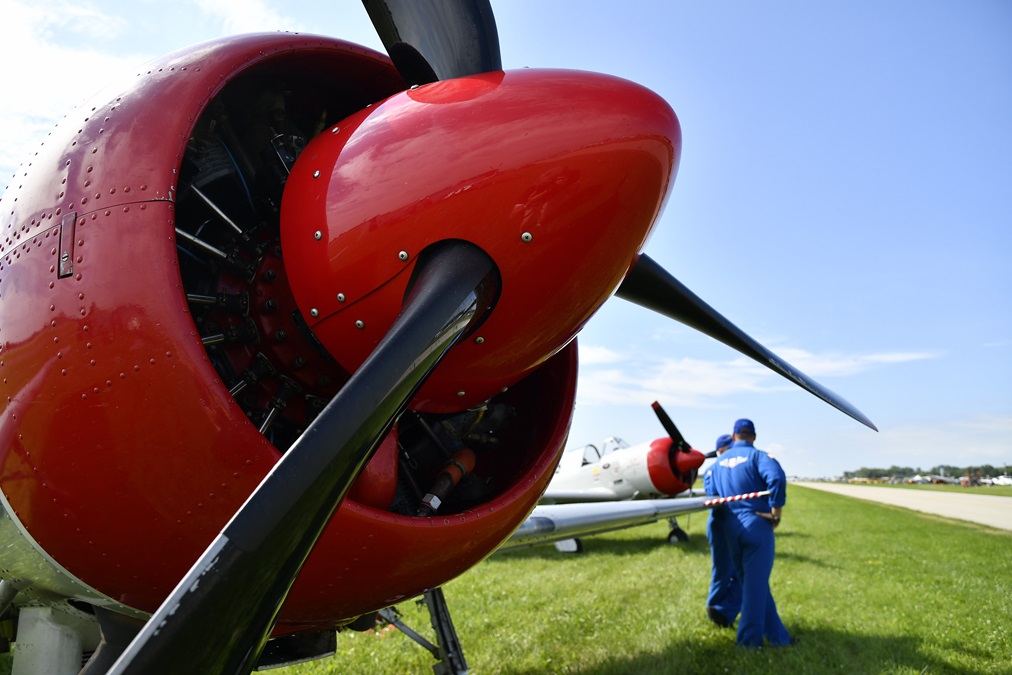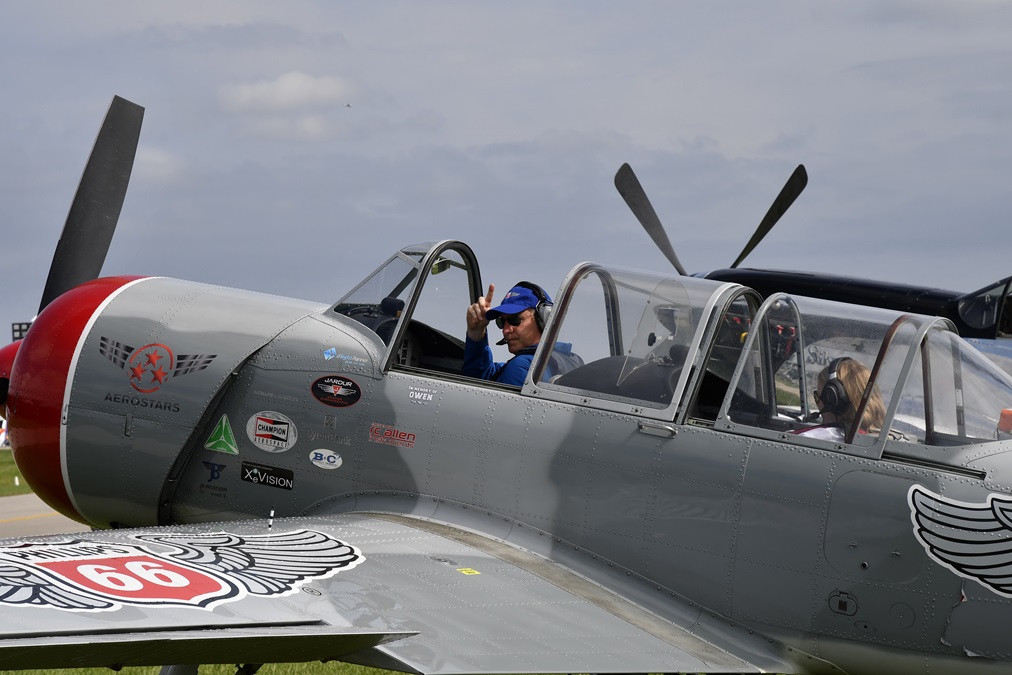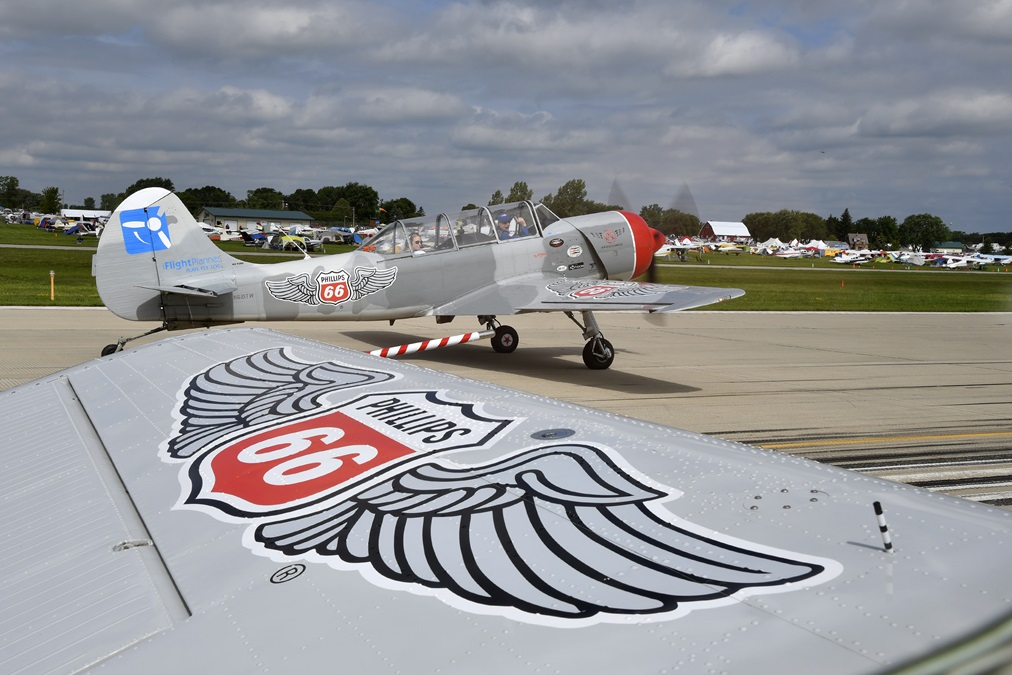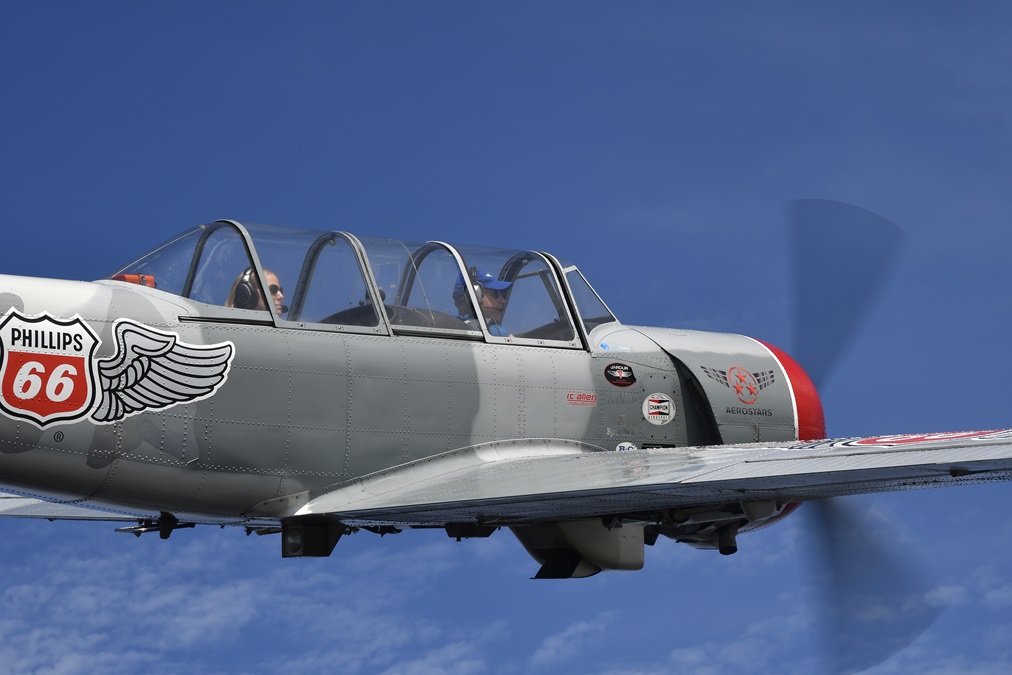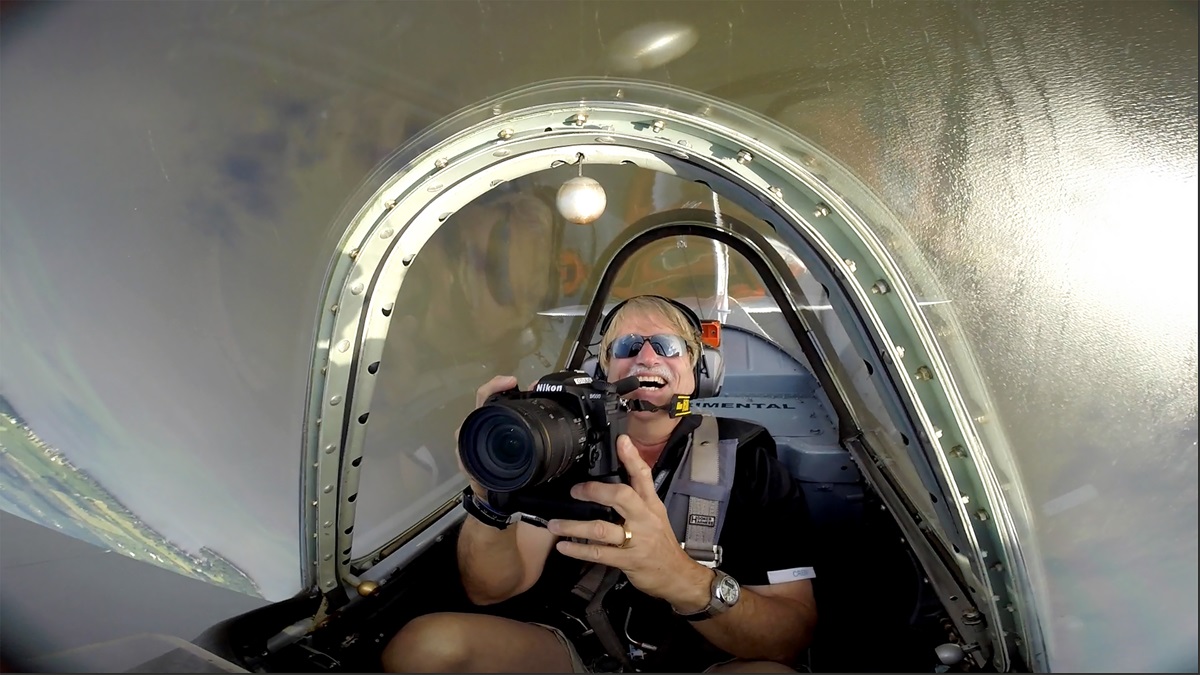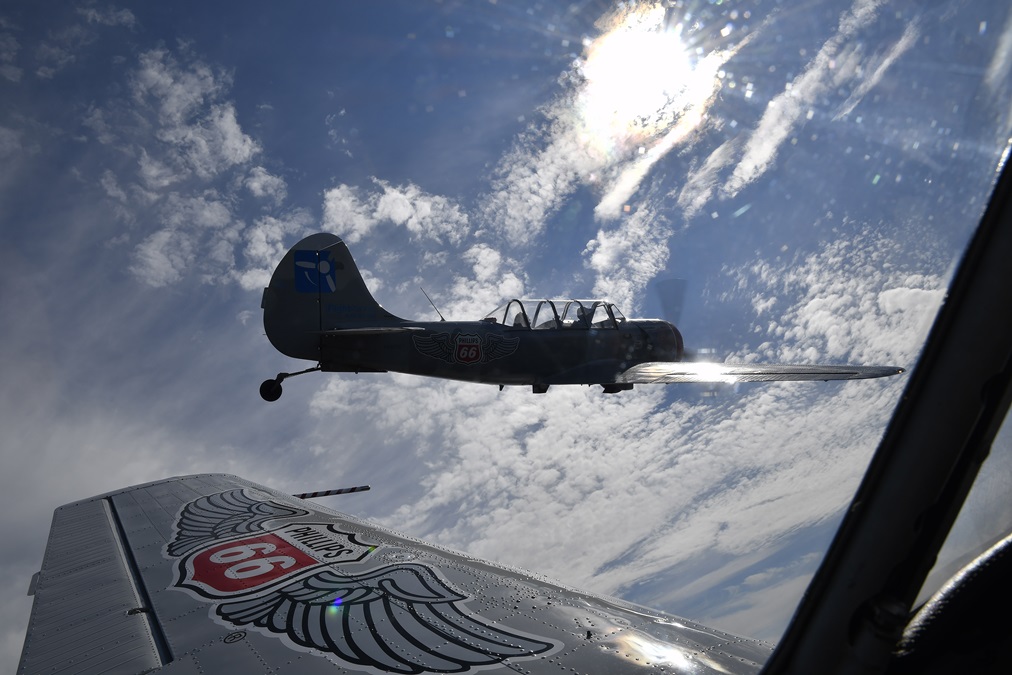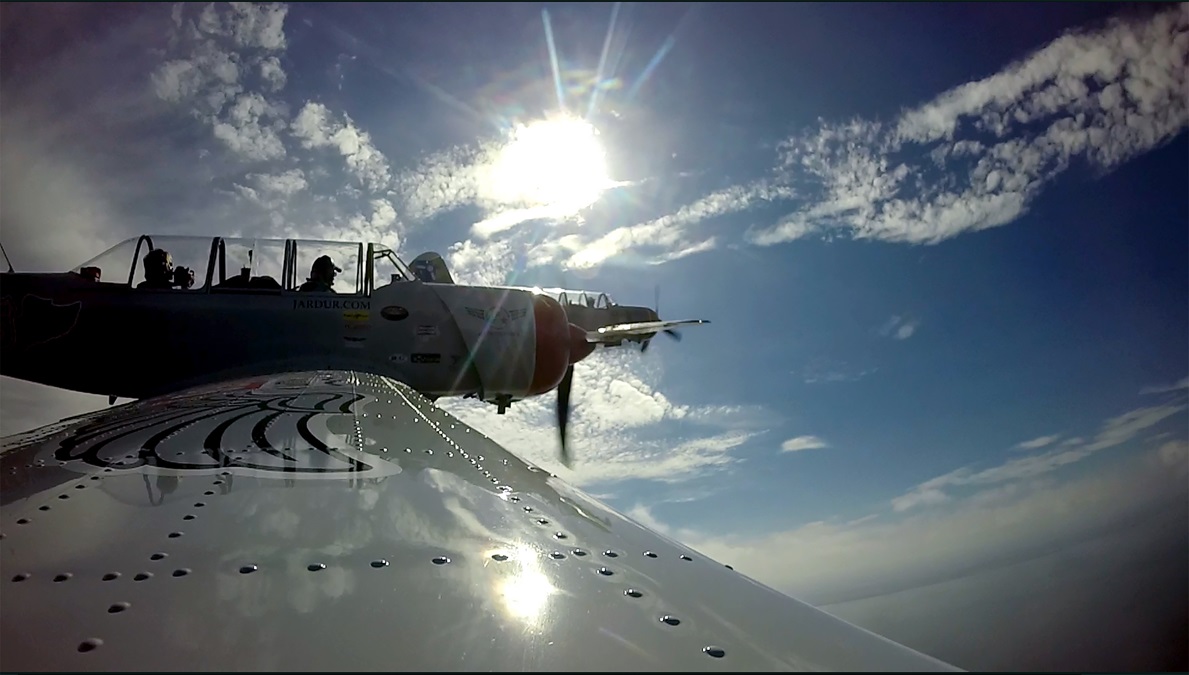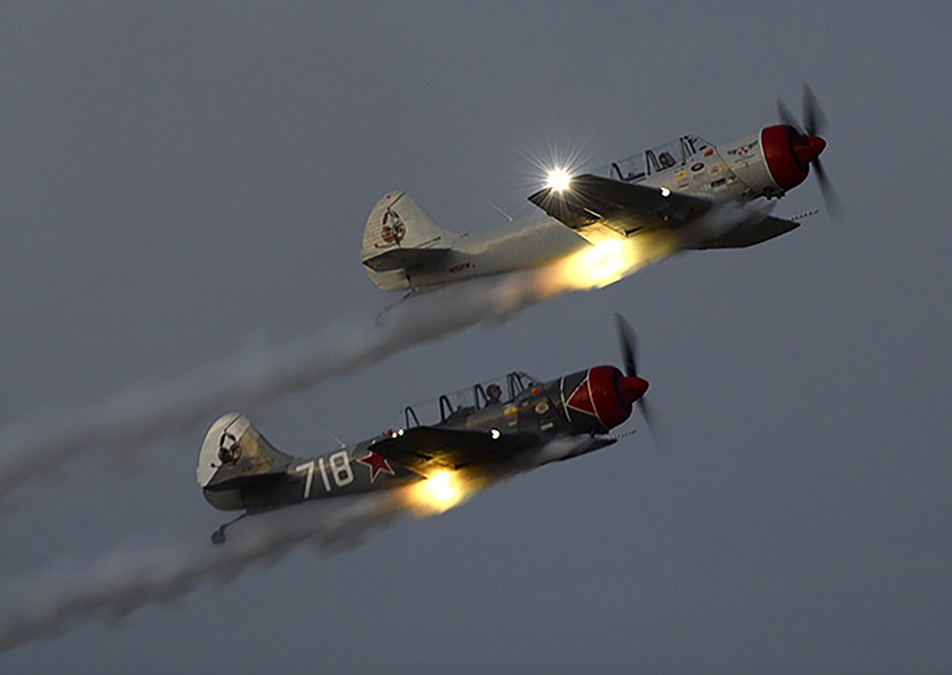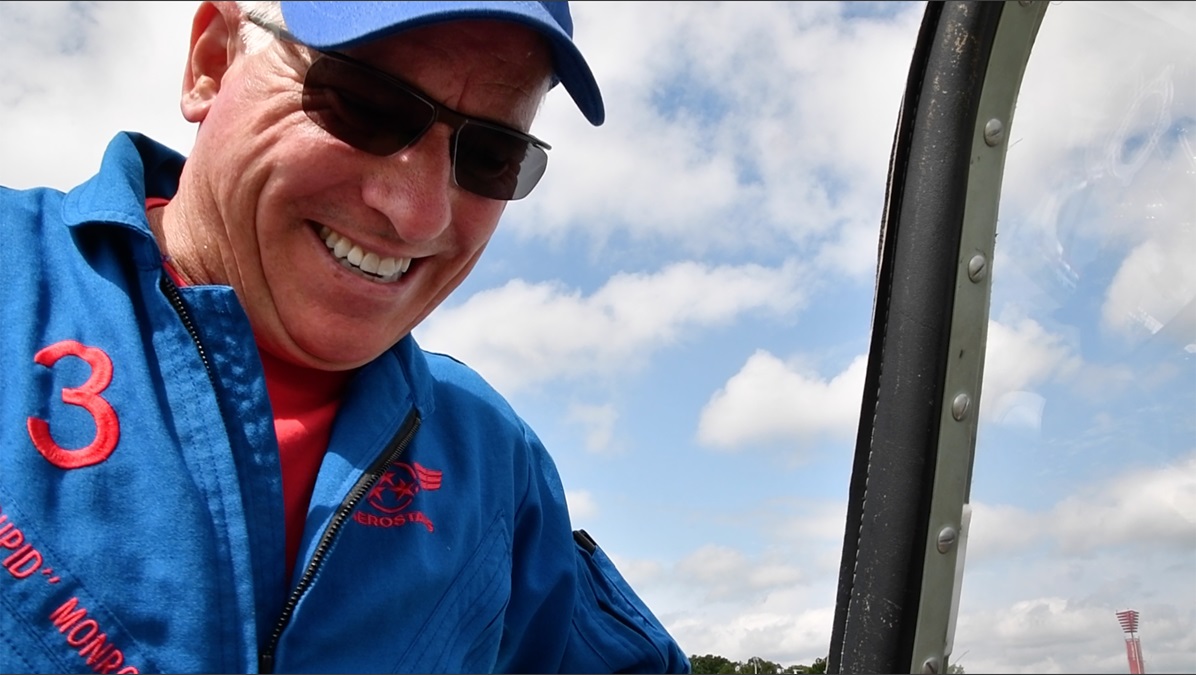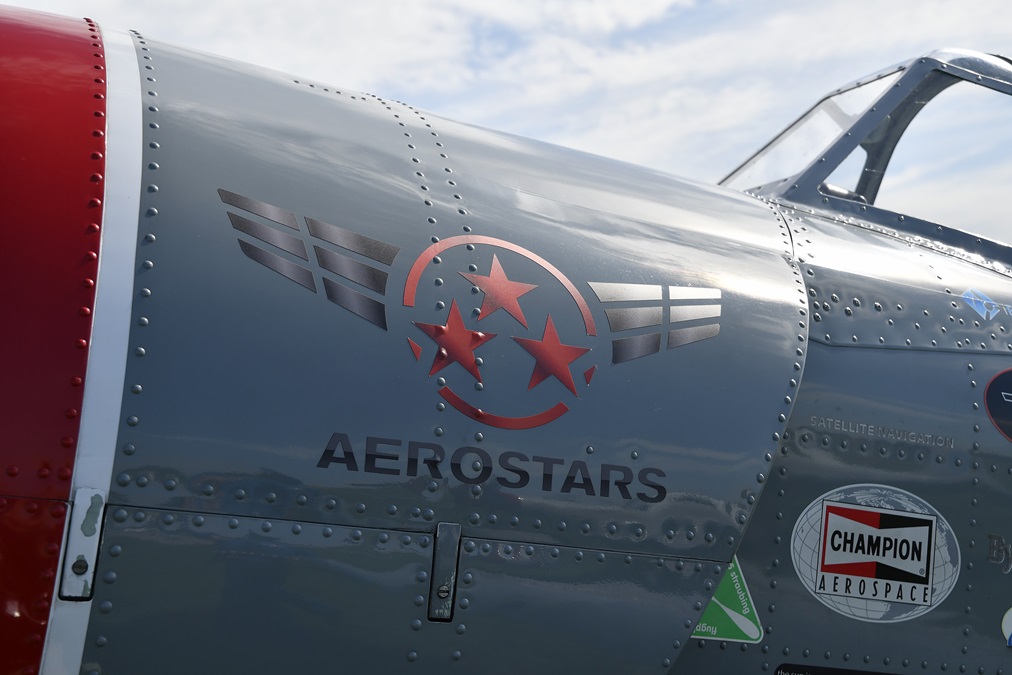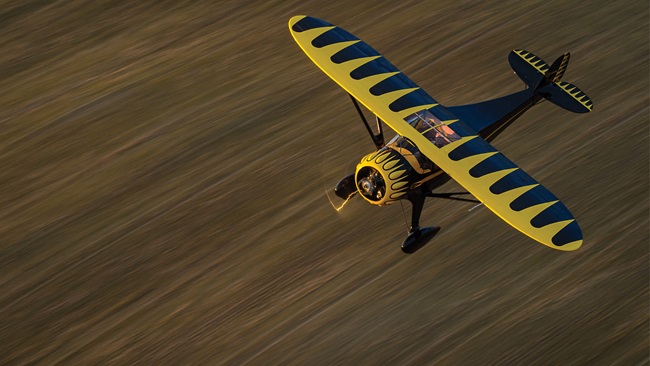Behind the scenes with the Phillips 66 Aerostars
Airshow stars ‘live, eat, and sleep’ aviation
Preparation for the Phillips 66 Aerostars precision aerobatic performance begins in the dead of winter, months before crowds crane their necks toward the sky. “We pretty much live, eat, and sleep aviation,” said Phillips 66 Team Aerostars pilot Paul “Rocket” Hornick.
Teammates Dave “Cupid” Monroe, Harvey “Boss” Meek, and Hornick greeted guests gathered near their Romanian-built 400-horsepower Yak 52TW aircraft and described their off-season training before conducting an aerobatic demonstration flight that included a couple of loops and rolls during EAA AirVenture.
Hornick is a Gold Seal flight instructor and corporate pilot; Meek has airline transport pilot privileges in three countries; Monroe is a check airman for a major airline; and newest member Gerry “Fossil” Molidor was scheduled to join the team in the near future. Together, the Aerostars perform daytime and nighttime aerial ballet routines that are celebrated by many.
Between the four of them, they own Aeronca Champs, multiple Piper Cubs, two Beechcraft Barons, a Mooney, a Sukhoi, and three Yaks, said Hornick, who explained that his fascination with aviation and spreading its joy is because he loves it.
“We’re never home," admitted Hornick, before he and Monroe gave participants a tiny taste of their high-flying precision act where—during a live performance—each pilot approaches a teammate at more than 220 mph head-on before a sharp breakaway that hushes crowds below. A few basic loops, rolls, and formation flying maneuvers provided a thrilling adventure when Lake Winnebago and Warbird Island passed below, above, and below again.
To keep their skills sharp, the Aerostars began practicing for the summer airshow season while snow still blanketed the ground near their Chicago-area home base. They practiced, critiqued maneuvers, and practiced again and again until they executed the routine perfectly. The aircraft as well as the pilots took a lot of punishment.
Before the season begins, "we’ll start up with a good four to five days, and a couple of sorties a day," explained Hornick. "You keep the sorties to a minimum time length in the beginning. By the end of the week you’ll work up to a full show sequence" that is thrilling and exhausting.
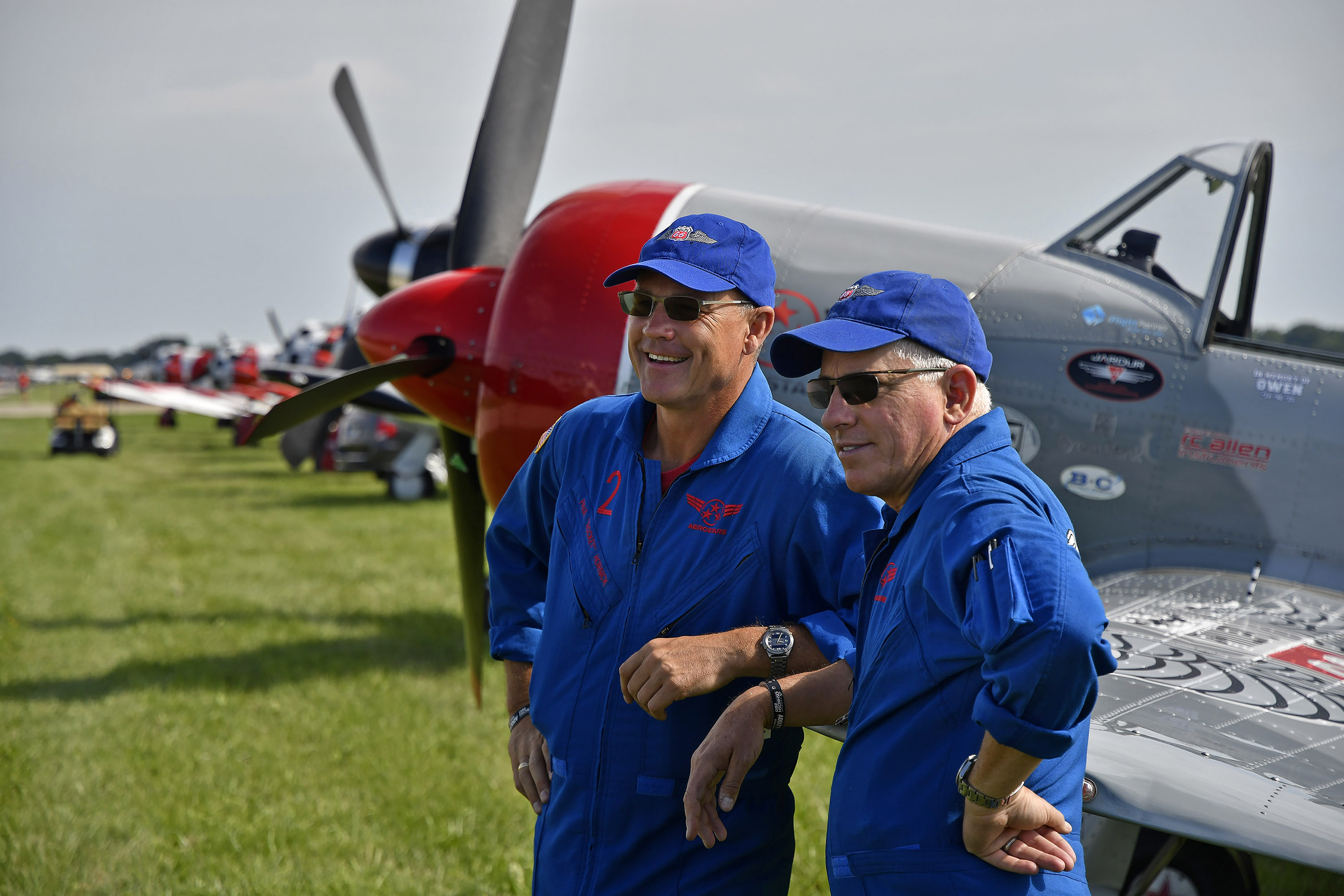
Hornick explained that the Aerostars' practice aerobatic box is about 10 minutes away from their home base so the team starts with knocking the winter rust off their aircraft—and their bodies—in short order. Although they bring thousands of hours of experience, the Aerostars practice continually to maintain critical safety standards and reserves. Before a performance, the teammates can be spotted walking the ramp with their eyes closed, visualizing each move. They use their hands to simulate the timing of breakaways and rejoins in an exaggerated animation to “see” each move.
"In the off-season, we’ll start our workups when it’s ridiculous—like below 20 degrees outside in January and February up in northern Illinois—and we’ll get the team spooled up and ready for the first show of the season. We beat the tar out of the airplanes’ engines," said Hornick. "And we run ‘em hard during the show."
The Aerostars' dedication to their craft is expensive in time and money, Hornick explained as he recalled how several years ago the pilots added their signature “downward bomb burst” show opener to an already established routine. “To break it down and get it to the point where we were able to roll on a zero-lift line down—and stay in formation—cost more than $6,000 in fuel bills alone, and that was a few years ago when fuel was cheaper.” He pointed out that the team already knew how to do barrel rolls and loops in formation. “Just adding that one single, solitary figure was another six grand," and doesn’t include additional maintenance reserves. “It’s just strictly for the fuel.”
Over its first six years of existence, the team grew the show and added to its complexity, recalled Hornick. Once the Aerostars had the timing down the show hasn’t changed too much in the last decade, and that is just fine with spectators. They are wowed by the timing, gracefulness, and precision that the Aerostars formation pilots bring to an airshow.
“When we’re flying the show, during that 17-minute period we’re actually not thinking about the public," Hornick revealed. "That piece of the puzzle is done before and after the flying. When we’re actually in the show—for me personally—it’s the most peaceful time in my life. And it sounds odd but it provides me a sense of focus where nothing else matters for those 17 minutes. That is really meditative for me and a source of almost mental release. During that time period the focus is incredible and because of it, it’s almost a serene moment for me," he confided. "Although most people would think, ‘That doesn’t make sense.'"
Besides their performance routine, the Aerostars make it a mission to personally touch people by encouraging them to consider high-demand aviation or engineering careers.
"My middle son brought one of his buddies home from college who was studying mechanical engineering and he had never been in any airplane in his life. None! He'd never been on vacation in an airplane and now he’s at O.C.S. [officer candidate school] because he took a ride with us," explained Hornick.
A flight in the backseat of Meek's Yak "from our place in the Chicago area out to the Dubuque [Iowa] airshow was his first experience with flying—ever. He got home and said, 'I think I’d want to try out for that Marine Corps Platoon Leaders Course program.' So, he’s there right now," said Hornick. "That’s one of our missions, to get young people enthused about flying—and maintenance. You know, not everyone wants to fly. Some people like tinkering. Me, I’d rather fly!" he confided. "But we all are very involved in our aircraft maintenance."
AOPA’s You Can Fly initiatives recognize the importance of building the pilot community through programs that include high school learning curriculum, flying clubs, Rusty Pilots seminars, and other pilot-support mechanisms that make flying safe, fun, and affordable. The goal of AOPA’s You Can Fly High School Initiative is to help build and sustain aviation-based science, technology, engineering, and math programs and provide a quality workforce to the aviation industry.
Hornick said he's happy to see an uptick of interest in others pursuing aviation careers. Boeing has predicted the field will remain strong for another 20 years with a high demand for pilots, maintenance technicians, and cabin crew personnel.
"A lot of people back in the late '90s got out of flying or decided, ‘I don’t want to get into flying because I could go to med school or something for the same amount of money.’ Now they’re [the airlines] having staffing trouble simply because there were so many years of limited student starts."
With their high-flying aerial ballet, high-speed passes, and precision maneuvers, Hornick said the Phillips 66 Aerostars seek to "inspire young people throughout our shows to get involved and get that fire for aviation careers burning again. There’s a lot of money to be made nowadays in aviation, and it’s a good time to be a pilot.”


